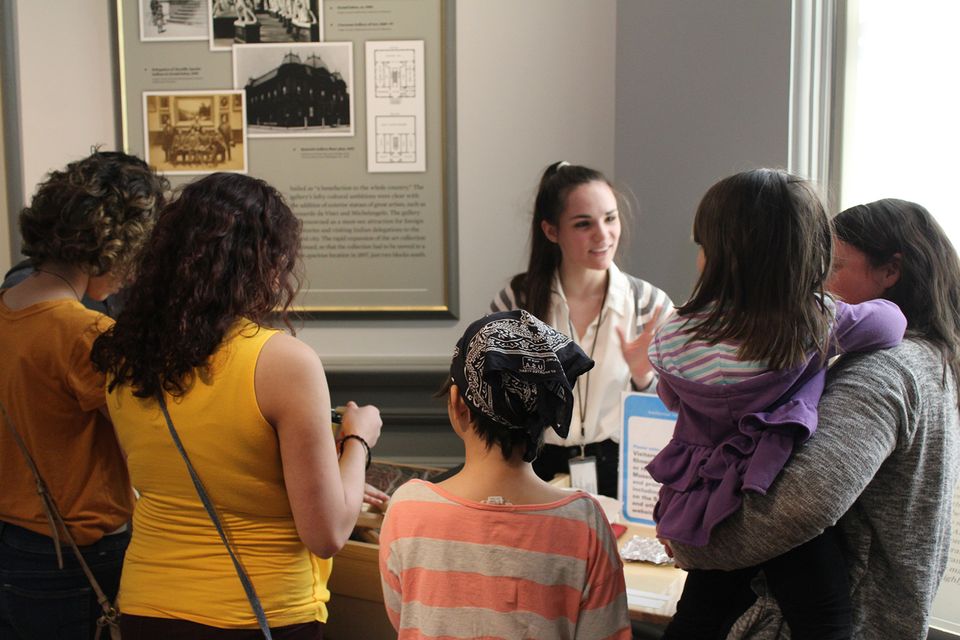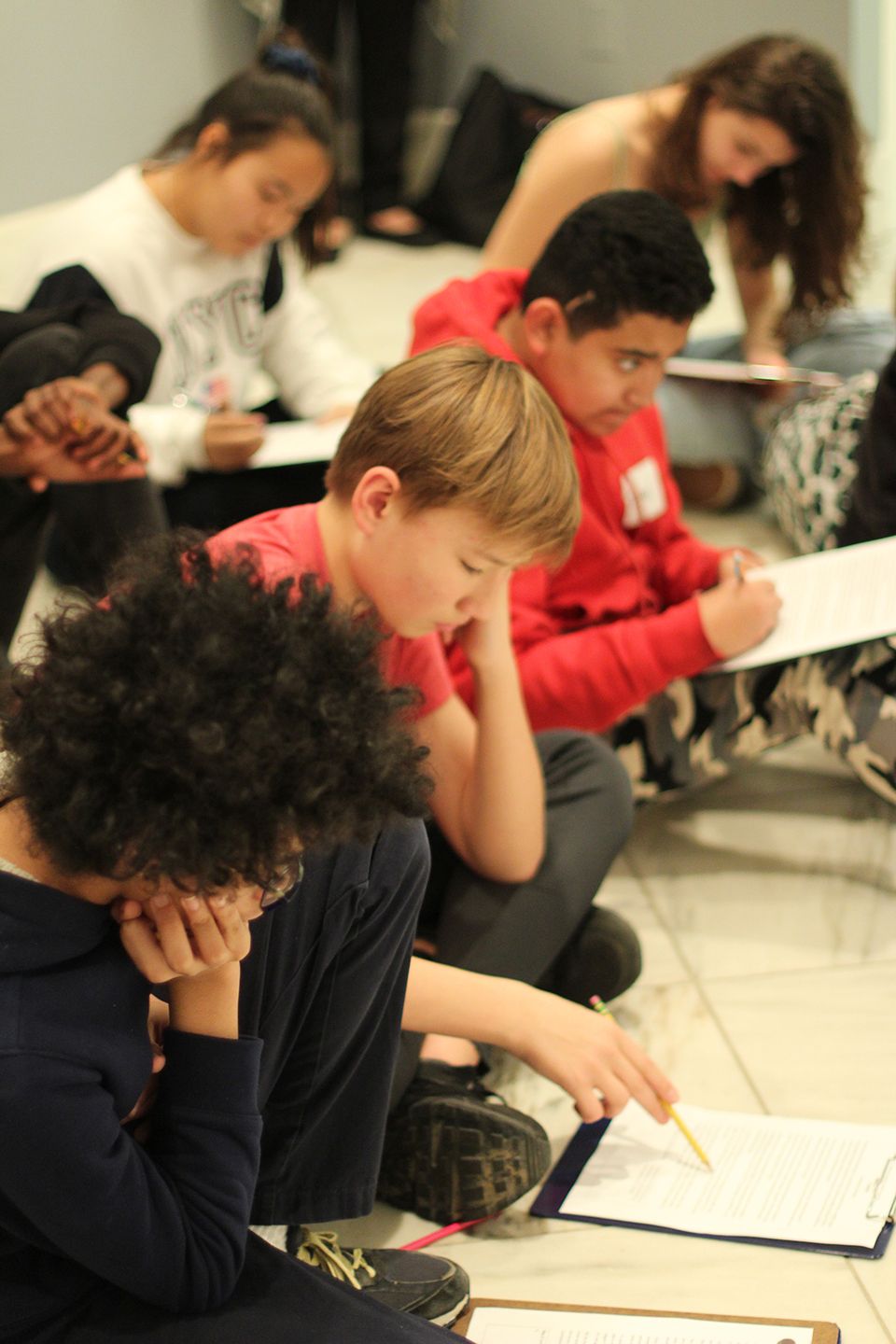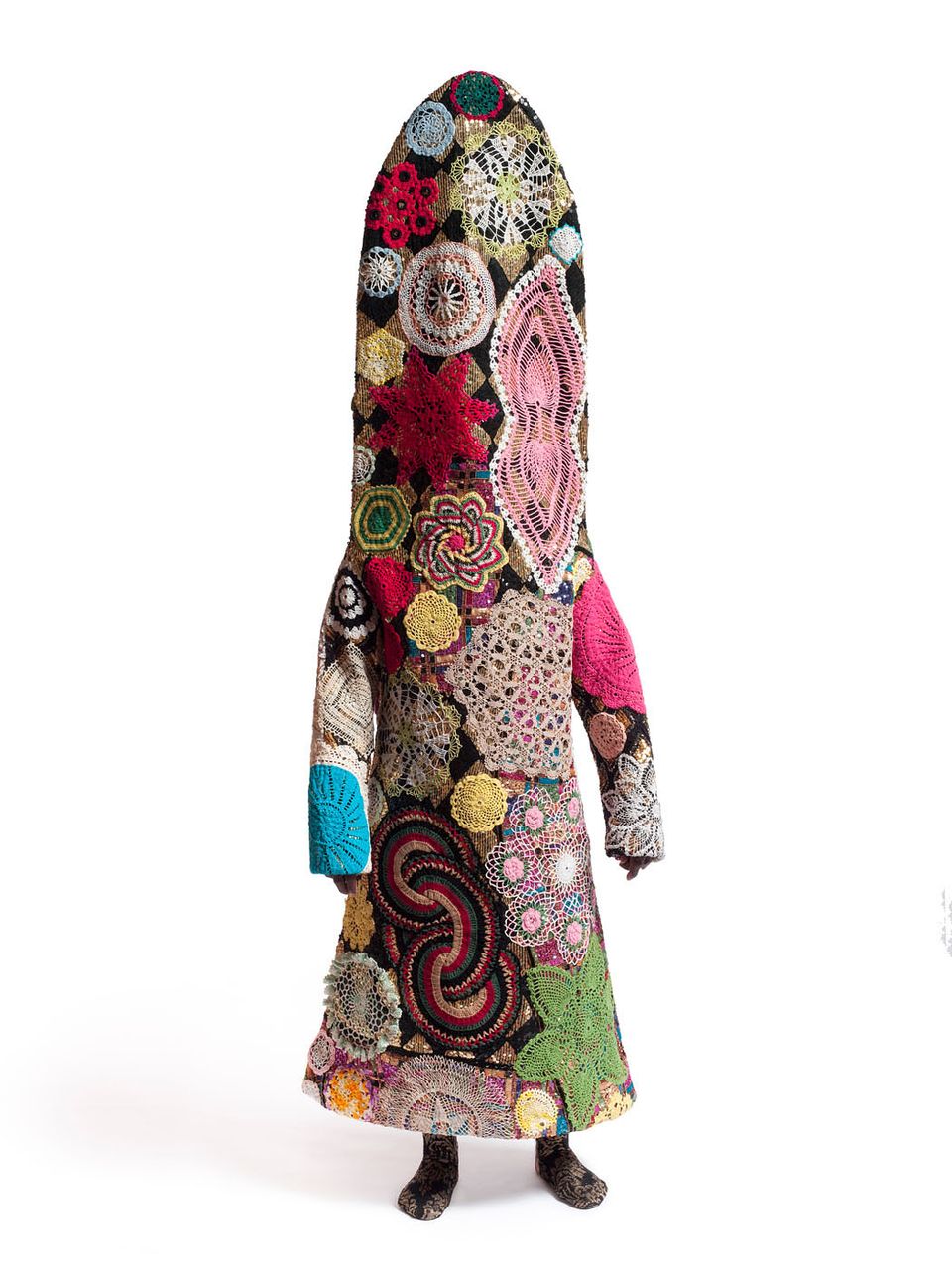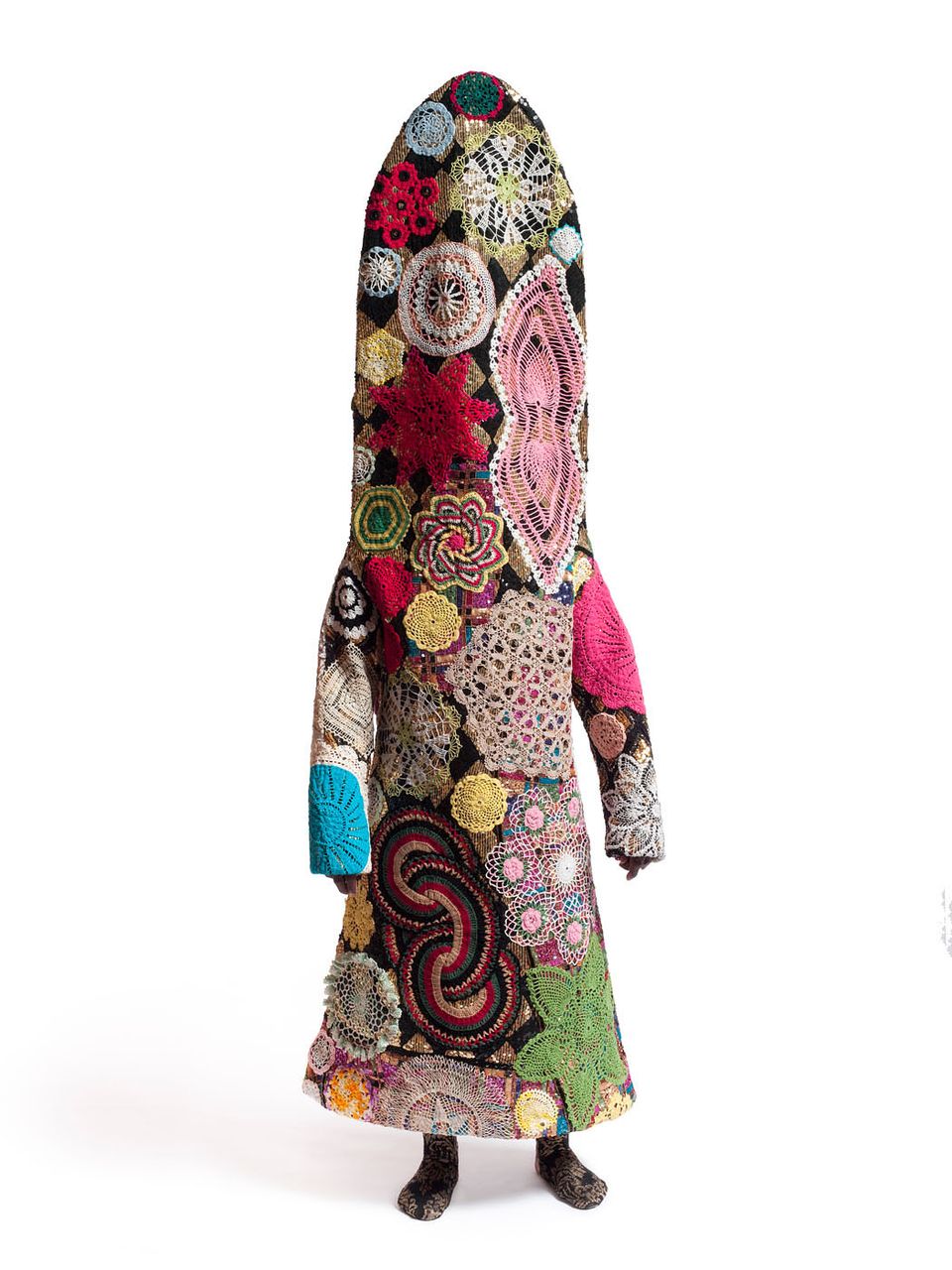
Nick Cave, Soundsuit, 2009, mixed media
Essential Questions
- How can looking at the context and seeking what is not visible deepen our understanding of issues, events, and people?
- What is a main story?
- What is a side story?
- What is a hidden story?
- How does exploring all three stories deepen our understanding of issues, events, and people?
Arc of Learning
(75 minutes)
- Introduction
- What Is Visible? (The Main Story)
- What Is the Artwork About?
- Optional: Metacognitive Break
- Considering the Context (The Side Story)
- What Remains Unknown? (Hidden Story)
- I Used to Think… Now I Think…
- Reflection
- Optional: Extension Activity
Tell the Main Story
This initial set of learning experiences establishes the foundation for the unit by demonstrating in two ways that information that is readily available can be incomplete. In this exercise, the main story is the information that is readily apparent in any type of text. Instead of “main story,” feel free to substitute the corresponding term that appears in your curriculum.

Teaching Moves
Students begin by examining a box provided by the teacher to discern what kinds of information can be gained by looking closely. Transferring the close-looking skill to a more ornate, less familiar object, students look closely at Nick Cave’s Soundsuit. By first observing, then interpreting the artwork, students document their initial thoughts about the artwork in the absence of additional information. Using a thinking pattern (Claim-Support-Question), they catalogue not only their evidence-based reasoning but also questions that remain unanswered by this process.
Uncover the Side and Hidden Stories
This set of learning experiences challenges students to seek other stories to develop a deeper and more nuanced understanding of the artwork. Here, the side story is the context in which a story takes place, the time period, the environment, the values, etc. The hidden story is what is not known publicly about the story. Instead of “side story” and “hidden story,” feel free to substitute corresponding terms that appear in your curriculum.

Teaching Moves
Students begin this set of activities by leveraging their own experience, then extending into conjecture: they imagine the physical and emotional experience of wearing the artwork in order to better understand its possible use. Revisiting their interpretations and questions from the previous set, students identify shifts in their thinking and new questions that arise. Finally, they explore the concept of the hidden story in order to prepare for the final set of experiences.
Reflect and Apply
The final set of learning experiences focuses on understanding the artist’s motivations and biography to understand the artwork better. In addition to incorporating the artist’s voice, this step adds depth to students’ interpretation and provides them with an opportunity to reflect upon the value of the main, side, and hidden stories in concert.

Teaching Moves
Students read an excerpt about the first Soundsuit and revisit their earlier interpretations. Next, students reflect on the insights they gained about main, side, and hidden stories from engaging with the artwork. Students finally reflect on other situations in which seeking hidden stories would deepen their understanding of other complex ideas, events, or texts.
In an optional extension activity, students write their own main, side, and hidden stories. Consider using it as part of a narrative writing unit or a biographical study.

















